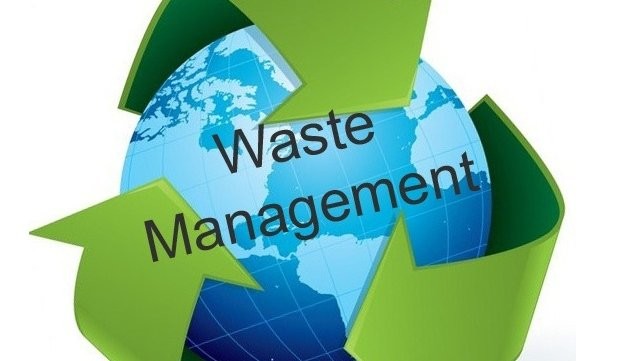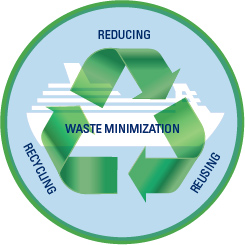Discover the Conveniences of Recycling Lives Services for Your Service
Discover the Conveniences of Recycling Lives Services for Your Service
Blog Article
Exploring Different Sorts Of Waste in Modern Waste Management Equipment
The contemporary landscape of waste management includes browsing an intricate array of waste types, each calling for specialized handling and disposal methods to alleviate environmental impacts. Metropolitan strong waste, harmful waste, electronic waste, and natural waste each existing unique difficulties and opportunities for source healing. Cutting-edge solutions such as smart waste containers and waste-to-energy innovations are emerging as important devices in improving efficiency and sustainability. Comprehending these waste kinds is important for fostering public awareness and encouraging active engagement in lasting techniques. What techniques can efficiently attend to these different sorts of waste while advertising a round economy?
Metropolitan Strong Waste
Community strong waste, often described as home trash or waste, incorporates a range of disposed of materials produced by domestic, commercial, and institutional sources within a town. This waste stream normally consists of things such as packaging, food scraps, lawn trimmings, paper, plastics, textiles, and disposed of family goods. The management of community solid waste is an important part of urban planning and public wellness, necessitating reliable collection, transport, and disposal systems.
Effective waste management systems are developed to minimize environmental effect while making the most of source recovery. This usually includes a mix of strategies including composting, landfilling, and recycling. Reusing programs target materials like paper, glass, metals, and particular plastics, diverting them from landfills and reintroducing them right into the manufacturing cycle. Composting organic waste, such as food scraps and lawn trimmings, not only decreases landfill use but additionally produces beneficial soil modifications.
Communities have to additionally address the logistical and economic obstacles related to waste management. Executing pay-as-you-throw systems, boosting public understanding, and buying technology can substantially boost waste diversion prices. By incorporating these techniques, districts can foster lasting communities, minimize greenhouse gas exhausts, and preserve natural deposits.
Contaminated Materials

Effective contaminated materials management entails numerous crucial actions: recognition, segregation, disposal, and therapy. Identification requires the classification of waste based on its harmful residential or commercial properties. Partition ensures that dangerous products are stored independently from non-hazardous waste to prevent cross-contamination. Treatment techniques, such as chemical neutralization, incineration, and stablizing, are employed to lower the poisoning, quantity, or movement of the waste. Disposal alternatives, consisting of protected garbage dumps and underground storage space, are picked to make certain long-term control.
Governing structures, such as the Source Preservation and Recuperation Act (RCRA) in the USA, supply standards and requirements for contaminated materials monitoring. Adherence to these laws, paired with advancements in waste therapy modern technologies, is essential in reducing the threats related to harmful waste.
Electronic Waste
Digital waste, commonly described as e-waste, represents a rapidly growing difficulty in waste administration systems worldwide. This type of waste encompasses thrown out digital devices and devices such as mobile phones, computers, televisions, and other electronic devices. The rapid rate of technical development, combined with lowering item life expectancies and customer demand for the most recent tools, has actually tremendously enhanced the quantity of e-waste generated annually.
E-waste is specifically troublesome due to its complicated make-up, typically containing harmful compounds like cadmium, mercury, and lead, which present significant ecological and health and wellness risks otherwise appropriately handled. Alternatively, e-waste likewise consists of beneficial products such as copper, gold, and silver, which can be recouped and recycled. The twin nature of e-waste-- both valuable and harmful-- necessitates specific handling, reusing, and disposal processes.
Effective e-waste monitoring involves rigorous regulative structures, robust collection systems, and progressed recycling modern technologies. Public awareness and involvement are essential, as inappropriate disposal practices, such as unlawful unloading and informal recycling, worsen ecological contamination and carcinogen. Improving e-waste administration techniques is crucial for minimizing environmental influence and recouping important resources in an increasingly electronic globe.

Organic Waste
Organic waste, consisting of kitchen area scraps, lawn trimmings, top article and farming deposits, stands for a substantial section of the worldwide waste stream. This sort of waste is eco-friendly, indicating it can be damaged down by microorganisms right into simpler natural compounds. Despite its possibility for natural disintegration, improper monitoring of organic waste can result in adverse environmental influences, including the exhaust of greenhouse gases such as methane, which add to climate modification.
Effective administration of natural waste is critical for lessening these ecological effects (recycling lives services). Composting is an extensively adopted approach, transforming natural waste into nutrient-rich garden compost that can improve soil wellness and agricultural productivity. Additionally, anaerobic food digestion is an arising innovation that converts natural waste into biogas, a renewable resource source, and digestate, which can be made use of as plant food
Municipalities and waste administration entities have to implement robust organic waste collection and treatment programs to take full advantage of the advantages of these procedures. Public education and learning projects can also play an essential duty in motivating households and companies to separate natural waste from other kinds of waste. By prioritizing the management of natural waste, societies can lower land fill use, reduced greenhouse gas discharges, and develop important results for farming usage.

Cutting-edge Waste Monitoring
In the realm of waste administration, cutting-edge techniques are changing how societies handle their refuse, aiming for sustainability and effectiveness. These innovations encompass a series of modern technologies and methods that improve reusing prices, decrease land fill dependency, and reduced environmental influence. One famous advancement is the implementation of wise waste containers geared up with sensing units that keep track of fill degrees and enhance collection courses. This not only lowers fuel consumption yet also minimizes greenhouse gas exhausts.
One more noteworthy development is the fostering of waste-to-energy (WtE) innovations. By converting non-recyclable waste right into usable power with processes such as incineration and anaerobic digestion, WtE lowers land fill problem i was reading this and supplies a renewable energy source. Additionally, innovations in chemical recycling allow for the failure of intricate plastics into their initial monomers, enabling the production of new, premium plastic items.
Moreover, the round economy version is acquiring grip, emphasizing the layout of items and systems that focus on reusability and resource performance. This holistic approach motivates industries to decrease waste generation from the beginning. Through these innovative techniques, modern waste monitoring systems are not only dealing with the prompt difficulties of garbage disposal but likewise paving the means for an extra sustainable future.
Final Thought
A thorough understanding of metropolitan solid waste, contaminated materials, digital waste, and organic waste, paired with the execution of cutting-edge waste management services, is crucial for reducing ecological effects. Incorporating innovations such as smart waste containers and waste-to-energy systems can boost efficiency and sustainability. Efficient waste management methods not only foster source recovery yet additionally promote public awareness and participation, ultimately adding to the development of a circular economy.
The contemporary find out here landscape of waste management includes navigating a complicated variety of waste kinds, each calling for specialized handling and disposal methods to minimize ecological impacts. Municipal solid waste, harmful waste, electronic waste, and organic waste each existing distinct challenges and chances for resource recovery.Digital waste, commonly referred to as e-waste, represents a rapidly growing difficulty in waste administration systems around the world. Via these innovative approaches, modern-day waste administration systems are not only attending to the immediate challenges of waste disposal yet additionally paving the way for a more sustainable future.
A detailed understanding of metropolitan strong waste, unsafe waste, electronic waste, and organic waste, combined with the execution of ingenious waste administration solutions, is critical for reducing environmental effects. (recycling lives services)
Report this page